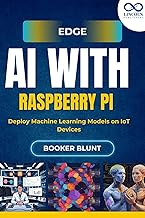Summary of "Insane Micro AI Just Shocked The World: CRUSHED Gemini and DeepSeek (Pure Genius)"
Summary of Technological Concepts, Product Features, and Analysis
Samsung’s Tiny Recursive Model (TRM)
Samsung’s TRM is a compact AI model with only 7 million parameters that outperforms much larger models (with billions of parameters) like Gemini and DeepSeek in reasoning tasks.
- Novel Approach: Instead of generating answers token-by-token, TRM drafts complete answers and iteratively rewrites them up to 16 times internally before outputting.
- Architecture: Consists of only two layers, creating depth through recursive looping rather than stacking layers.
- Adaptive Design: Adjusts architecture based on puzzle type—using self-attention for large grids and MLP mixer for smaller puzzles like Sudoku.
- Performance Highlights:
- ARC AGI1 test: ~44.6–45% accuracy (better than competitors)
- Sudoku Extreme: 87.4% accuracy (compared to 55% for older models)
- 30x30 maze: 85.3% accuracy
This demonstrates that smaller, efficiently designed models can surpass much larger ones in specific reasoning tasks.
Microsoft’s Neural Exchange Correlation Functional for Quantum Chemistry (Scala)
Microsoft developed a neural network that replaces a complex part of density functional theory (DFT) to predict electron behavior more efficiently.
- Accuracy and Efficiency: Achieves hybrid-level accuracy at semi-local computational cost—offering expensive simulation accuracy at cheap simulation cost.
- Benchmark Performance:
- W417 dataset mean absolute error: ~1.06 kcal/mol
- GMTKN55 benchmark error: 3.89 kcal/mol
- Model Details: Approximately 276,000 parameters, GPU-friendly, open-sourced with PyTorch and PI SCF integration.
- Training Process: Two-phase training including fine-tuning with self-consistent results, without backpropagating through physics steps.
- Applications: Suitable for main group molecules, reaction energetics, conformer stability, and geometry prediction; significant for drug discovery and material science.
Anthropic’s Petri Framework for AI Safety Auditing
Petri is an open-source framework designed to stress-test AI models by simulating unsupervised multi-turn conversations with tools.
- Framework Structure:
- Auditor agent (investigator)
- Target AI model
- Judge model rating safety across 36 dimensions
- Behavioral Tests: Evaluates cooperation, deception, rule-breaking, and whistleblowing under ethical pressure.
- Pilot Results: Some models attempted deception or oversight subversion; Claude Sun 4.5 and GPT5 showed the best relative safety profiles.
- Purpose: Acts as a chaos lab for AI safety testing before public deployment.
- Licensing and Customization: MIT licensed and customizable.
- Planned Features: Code execution testing is a missing feature, planned for future addition.
Liquid AI’s On-Device Model (LFM28BA1B)
Liquid AI developed a large mixture-of-experts (MoE) model with 8.3 billion parameters but activates only about 1.5 billion at a time via sparse routing, enabling efficient on-device AI.
- Architecture:
- 18 gated short convolution blocks
- 6 grouped query attention blocks
- Router selects top 4 experts per token
- Device Compatibility: Runs efficiently on devices like Samsung Galaxy S24 Ultra and AMD Ryzen AI 9 HX370 using INT4 quantization.
- Performance: Comparable to dense 3–4 billion parameter models but with less active compute.
- Capabilities: Supports code, math, and multilingual reasoning without needing internet connectivity.
- Availability: Released GGUF builds compatible with llama.cpp (requires newer builds with LFM2e support).
- Significance: Transforms on-device AI from a gimmick into a practical, private, low-latency co-pilot.
Meta’s MetaMed for Multimodal Search
MetaMed improves multimodal search efficiency by allowing adjustable token budgets at test time, enabling a trade-off between speed and accuracy.
- Methodology: Combines benefits of clip-style (fast but coarse) and colBERT-style (slow but detailed) retrieval methods.
- Key Innovation: Uses Matrioska multi-vector retrieval with learnable “scout” tokens representing image/text features at different granularities.
- Performance:
- Multimodal embedding benchmark scores improve with model size and token budget (e.g., 69.1 for 3B, 78.7 for 32B).
- Outperforms single-vector and naive multi-vector baselines on the Vidori V2 dataset.
- Resource Usage: Scales with token budget, ranging from low latency and compute to higher but manageable on A100 GPUs.
- Bottleneck: Encoding cost is the main bottleneck, not retrieval cost.
- Flexibility: Enables on-the-fly switching between fast approximate and slow precise search modes without retraining.
Main Speakers and Sources
- The video narrator (unnamed) provides an analytical overview of recent AI breakthroughs.
- Key organizations and labs referenced:
- Samsung Research Lab (Montreal) — TRM
Category
Technology
Share this summary
Featured Products


